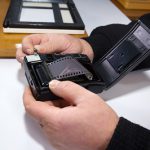One of amazing things about gold is that it is one of the least reactive chemical elements. This quality of inertness is one of the reasons why gold became the basis of early currency. No matter where or for how long it’s stored, it won’t rust, breakdown, or change in any way – perfectly retaining its original quality and value. However, there are some substances that gold will react with in the right conditions. Most of the byproducts from such reactions are useful, like amalgams and gold compounds. Others, like gold intermetallics, can be problematic.
Similar to alloys, an intermetallic is a mixture of two or more metals, with optionally one or more non-metals. The difference is that intermetallics form from a defined ratio of reactants into an ordered crystal structure. When the ratios are correct, gold can combine with metals like tin or aluminum to become intermetallic. This reaction commonly occurs in microelectronics and can cause devices to stop working.
Gold is commonly used in electronics because of its conductivity and corrosion resistance. However, it needs to be applied carefully to prevent the formation of intermetallics. For example, the gold-aluminum intermetallic Au5Al2 has low electrical conductivity. If enough of it forms, the resulting electrical resistance can cause the component to fail. Another gold-aluminum intermetallic, AuAl2, reduces the volume of the original structure as it forms. This creates cavities in components, which increases electrical resistance and structurally weakens any circuit connections.
To avoid introducing intermetallics into circuitry, gold and aluminum components must be bonded together without using heat. Ultrasonic welding is a common solution. Without it, circuitry must be designed using only aluminum-to-aluminum or gold-to-gold junctions.











